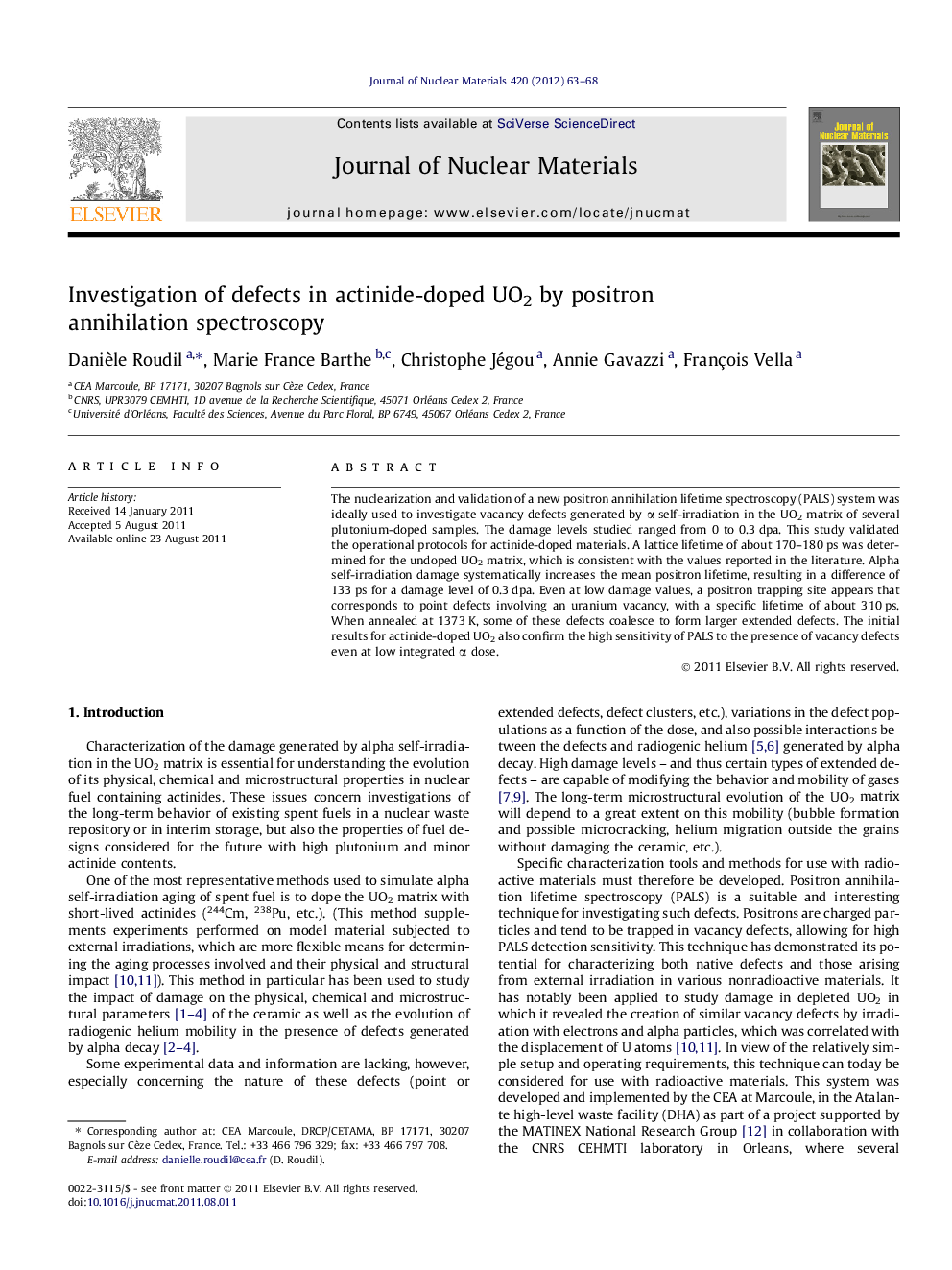| Article ID | Journal | Published Year | Pages | File Type |
|---|---|---|---|---|
| 1566439 | Journal of Nuclear Materials | 2012 | 6 Pages |
The nuclearization and validation of a new positron annihilation lifetime spectroscopy (PALS) system was ideally used to investigate vacancy defects generated by α self-irradiation in the UO2 matrix of several plutonium-doped samples. The damage levels studied ranged from 0 to 0.3 dpa. This study validated the operational protocols for actinide-doped materials. A lattice lifetime of about 170–180 ps was determined for the undoped UO2 matrix, which is consistent with the values reported in the literature. Alpha self-irradiation damage systematically increases the mean positron lifetime, resulting in a difference of 133 ps for a damage level of 0.3 dpa. Even at low damage values, a positron trapping site appears that corresponds to point defects involving an uranium vacancy, with a specific lifetime of about 310 ps. When annealed at 1373 K, some of these defects coalesce to form larger extended defects. The initial results for actinide-doped UO2 also confirm the high sensitivity of PALS to the presence of vacancy defects even at low integrated α dose.
